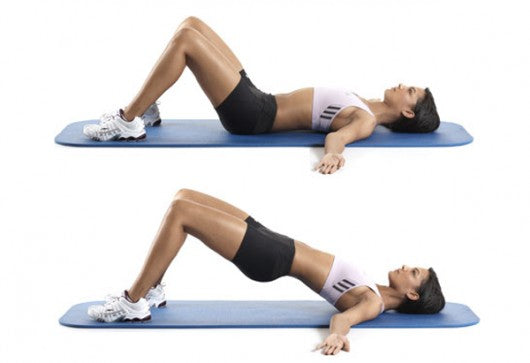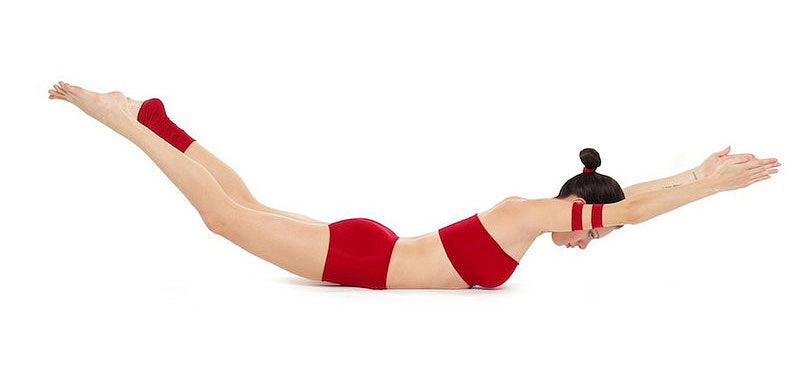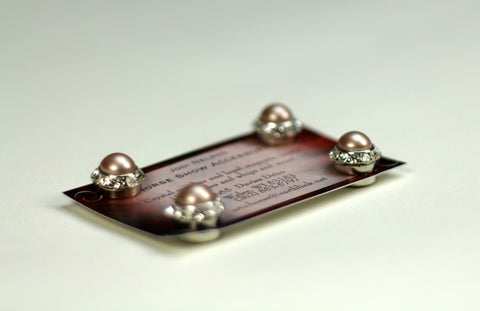The Riders' Blog
Workout Wednesday: Equestrians of the World, Meet Dr. Tabata February 25 2015
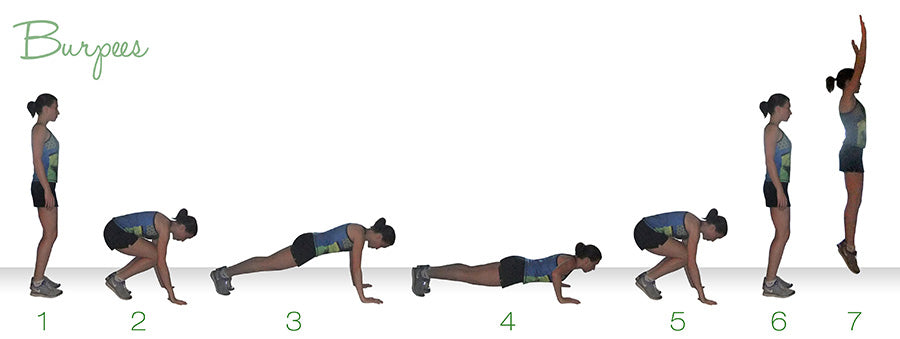
You’ve probably heard of burpees. You may or may not have heard of the Tabata protocol. And if not, I’m both proud and sorry to introduce you to it, because you will definitely have a love/hate relationship with this form of high intensity exercise, and its creator, Dr. Tabata.
Why bother?
You’re busy. You want to get a great cardio and muscular workout. And you want to get a greater benefit from four (yes four) minutes of intense exercise than you would during an hour-long moderate workout, right?
Then yeah, you’ll love Tabata. Or, at least, you’ll love what it does for you.
Tabata is a highly efficient form of high intensity interval training, which involves 20 seconds of intense activity, followed by 10 seconds of rest, repeated eight times. That’s it. Four total minutes, and at the end, you’ll have done more for your aerobic and anaerobic fitness than you would in a sixty minute bike ride.
For equestrians, an increase in your anaerobic capacity will help when it matters most - like if you are riding are particularly strong horse and you're feeling that 60 minute "warm up" (calm down) when you hit the second direction in the ring
How do I do it?
We’ve all done burpees before, whether in gym class, bootcamp classes, or flashbacks/nightmares. But the reason they feel so exhausting is the same reason as they’re great to do, they’re legitimately a full body body workout, combining a pushup, with a squat, with a jumping jack.
To do a burpee well, set up in a standing position. From there:
- Bend down and place your hands in front of you, slightly wider than your feet.
- Jump back into a plank position. As you jump back, make sure you keep your core contracted.
- From there, drop into a full pushup so your chest touches the floor.
- Pop back up to your feet, and jump into the air, like in a jumping jack.
To Tabat-ify this workout, just do 20 seconds of burpees followed by 10 seconds of rest. You can either sync it with a stopwatch, or use a free High Intensity Interval Training app to get the timing right.
When should I do it?
If you’re doing any strength training, be sure to do this workout afterwards. You can also do a Tabata workout as a quick, stand alone workout. If you do, however, make sure that you start with a quick dynamic warm up before getting started.The Five Essential Elements of any Horse's Training Routine February 22 2015

We’ve all heard that routine is good for the soul, like chicken soup, or sleeping in. If you happen to be in an Owner/Trainer/Rider situation, you can apply this rule to your horses training and you will find even horses love routine! There are at least five elements of a good saddle seat training regimen that are guaranteed to give your horse some confidence.
Long Lining
Insist on having at least one day of long lining in the training routine. Long lining is an exceptional way to really hone in on your horses relationship with a bridle. This is a method of training where you have your horse in all the equipment needed to hook them to a jog cart and drive (minus a breast collar) and have them walk and trot (and sometimes canter for horses that tend to be nervous about cantering) around you. Think of it as if you were lunging them, but of course insisting they wear their bridle and push up to it. This close space training method makes seeing your horse's reactions to turning left and turning right while pushing them up to the bridle much easier to SEE. Feeling it beneath you when you ride is important, but let’s be honest, sometimes we don’t even know what the whole package looks like until we see video from a show! It’s also good to give a horse a day to not pull a cart or drag a person around on their back, while still being able to accomplish some “training.”
Driving/jogging
This is like endurance day at the gym. A day or two of driving in the routine is another great method of building up your horse’s strength and endurance, a necessary piece of the puzzle for reaching the next level in their training. Any athlete has to have the physical wherewithal to learn a sport and that is the same for a horse. If carrying your butt around is too physically challenging for them just from the standpoint of walking around with your added weight, you won’t be able to stay on them long enough to really teach much without exhausting them.
Riding
How often you should, could, or need to ride your horse will really depend on their level of development, their needs, their fitness level and more. A good rule of thumb though is that riding a horse twice a week is a good foundation. Some younger horses that have the fitness, energy, and a need for constantly reinforced learning should be ridden more often, reducing their other forms of training. Horses that are well along in their training and already know their job can be ridden once a week and spend the rest of their time focusing on some of the other aspects of their training.
Lunging or Turning Out
This is a great way to get your horse out of their stall if they don’t have a pasture to play in or to get them to stretch their legs and raise their heart rate while also giving them a break from having a bit in their mouth, or equipment on their backs.
A Day Off
Just like people, horses need days off too. Let them stay out in the pasture with their friends or bring them in to lay down in their cozy, cushy stalls with some extra special treats to eat just for being adorable because they are your horse, but more importantly because they are your friend, your confidant, your partner in crime, your secret keeper, and the four legged love of your life.
While all of these are good tactics to building a training routine, perhaps the most important thing of all is to know your own limits and to seek professional assistance when you are stumped. It is in your own, and your horse’s best interest to get them into training with an experience horseman or woman in your industry/field of riding to keep your horse happy and to keep you safe if you’ve found a figurative (or literal) hurdle you can’t seem to get over.
Have any other general training tips or methods to share? Let us know in the comments down below!
Workout Wednesday: Strengthen Your Butt and Hamstrings with Glute Bridges February 18 2015
Why bother?
Because a strong, round butt is the equivalent of high cheekbones for your lower body. Unlike your face cheeks, though, your south-of-the equator cheeks can be sculpted with exercise.
Without a doubt, one of the best exercises for strengthening and toning your glutes is the glute bridge. This exercise also has a range of great benefits for riders:
- Firstly, a having a strong butt will help you roll in your knees and thighs as you ride, which helps maintain the desired saddle seat leg shape throughout a ride.
- Secondly, glute bridges are great for strengthening your hamstrings, which for many of us, are weaker than our quads and the other muscles in our ‘anterior (front) chain’.
- Finally, glute bridges help improve core stability, and particularly your lower abs, which will help improve your upper-body riding posture.
How do I do it?
- Lie down on your back with your knees bent at 90 degrees.
- Push down from your heels to lift your butt off the floor, until your back is aligned with your upper legs.
- Repeat for four sets of 18-25 reps.
To do this exercise safely, keep your butt and core tight as you push up, and keep your movements slow.
If these glute bridges are too easy, progress to single leg glute bridges and weighted hip thrusts.
When should I do it?
Do it on leg day, after you’ve done any weighted exercises, and before any plyometrics or core exercises.
Image from top.me
Workout Wednesday: Yeah, You Should Do More Pushups February 10 2015
Why bother?
You and I both know that we should do more pushups. Yes, they're really boring. Nobody is going to come up to while you're doing them and ask how long you've been doing parkour. And yeah, I know your mom does them. But they're the brussels sprouts of a decent workout routine - they're not going to make you a whole lot of friends, but they are very, very good for you.
The main muscle groups you'll work with push ups are your pecs, triceps and anterior deltoids - the front of your shoulder muscle. For riders, (especially in equitation), good arm and shoulder strength is a puzzle piece of great posture, and therefore, good form. What's more, using bodyweight exercises and calisthenics (rather than weights) to help strengthen your chest and shoulders will help you avoid overtraining your front - which can lead to rounded shoulders and a 'hunched' look while you ride.
And a HUGE bonus with high intensity interval training circuits like the one below is that they'll not only help with your strength, but they're a really efficient way to do your cardio. How efficient? Over 10 times more, according to one famous study.
How do I do them?
Seeing as last week's plank circuit from Neila Rey hopefully turned you into a sweaty, quivering mess, we're going back to the well with her Riddick workout.

When you're crying to the gym mat/carpet on the third set of these, remember that to keep good form during pushups, you should:
- Start with your hands slightly wider than shoulder width apart and your back straight (don't let it sag).
- Keep your head facing slightly forward and your butt and abs clenched. This will help keep everything in line.
- Keep your elbows from flaring out as you do pushups. They should be at angle of about 20-40 degrees from your body.
When should I do them?
The great thing about a circuit like this is that you can do it pretty much whenever (and wherever) you want. If you're looking to incorporate the circuit into a regular workout, then do it after you've finished doing any weights, but before you've worked on your core.
My Three Secrets to Overcoming Horse Show Nerves February 09 2015
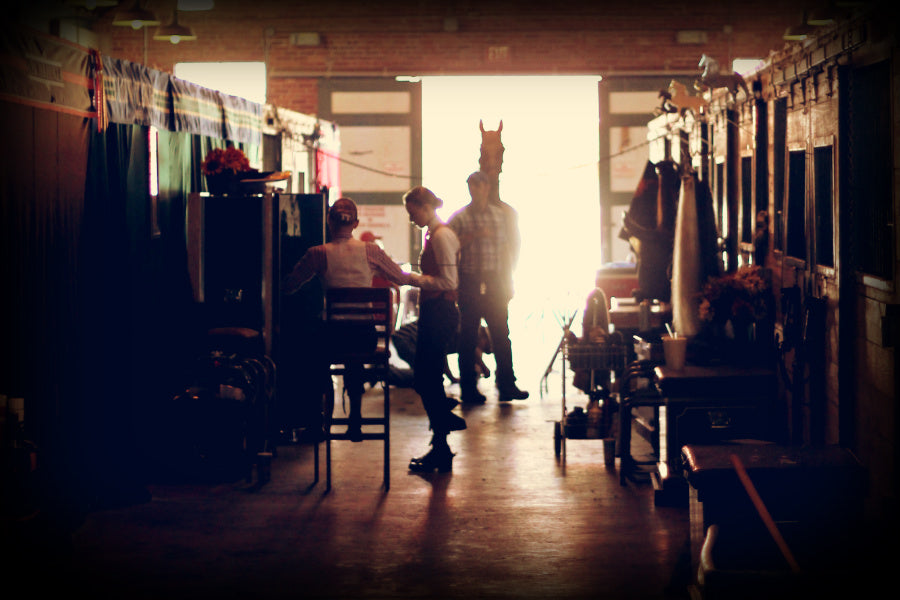
We've all felt the pangs of horse show nerves minutes, hours, and even days before we have a performance coming up. Am I going to do OK? Will I make my trainers happy? Will I fall off and die? All thoughts that I myself have had before a show throughout my Junior Exhibitor and Amateur years in the Saddle Seat world. Here are three things that I found to truly help quiet the pre-show jitters... and when all else fails, breathing exercises!
Practice
Sure, this one seems pretty obvious, but knowing what you and your horse are capable of individually and as a team is a huge part of overcoming your nerves. When you're at a horse show, it's important that you feel like you aren’t doing anything you haven’t done before.
Of course, in a show environment, you never really know what is going to happen. For example, being in a large class may make your your horse a little more game than you've experienced before. Not knowing what’s to come in a horse show isn’t as big of a deal if you’ve practiced and become a team with your mount. Likewise, if you’re catch riding, or riding a horse you’ve only ridden once or twice before, knowing your personal strengths as a rider can help you play to them, even when the unexpected happens.
Rituals
Find yourself a ritual. For me, it always means getting completely ready two hours before a show starts, no matter what time my class is. And I mean completely ready, not just dressed, but hair, makeup and jewelry all completely done. I could be riding in the last class of the day, and I will still be ready when the first ring drag is in progress.
For other riders it could be a lucky pair of socks that they wear for every class of the show (a little gross, sure, but you can't argue with results), or listening to a playlist of "Horse Show Pump Up Jams" every time they get ready. The point of these rituals is to help us feel comfort, familiarity and most importantly, control over a situation where we inevitably have very little.
Flexibility
All the practice and rituals in the world can go out the window when something goes wrong. You could be stuck in traffic and get to the show late, you could leave your lucky socks in the wash, or your phone could die, leaving your playlist out there in the ether. Don’t put so much stake into rituals that you'll be thrown off if they're disrupted.
Likewise, if a judge asks you to perform a pattern you’ve never done on a horse you’ve only ridden once, it doesn’t mean you’re doomed to fail. Practice is as much about boosting your confidence and preparing you for new situations as it is about developing specific skills, so carry that confidence through to a class when new challenges arise.
Do you have a ritual that helps you with horse show nerves? Let us know what it is in the comments below, or join the discussion on Facebook or Twitter!
Workout Wednesday: We All Hate Planks, But Here's Why You Should Do Them February 03 2015
Why bother?
Unless you’re a total masochist, you hate doing planks. Everything seems fine at first, then you start trembling like a leaf. Soon you’re a sweaty mess, and everything hurts. You check your timer. 10 seconds gone. Why do I do planks again?
Because they're one of the best exercises for equestrians. Here's why:
- They’re great for your balance and posture.
- They’re great for the flexibility in your shoulders, hamstrings, and even the arches of your feet.
- They’re great for your core, but they also work your thighs, butt, shoulders and back, all of which will improve your riding form. What’s more, engaging your core while your shoulders and glutes are also engaged helps you get the most out of your core workout.
How do I do it?
Good question, friend. Now that you’re in the planking mood, try this crazy, five minute plank workout from Neila Rey.
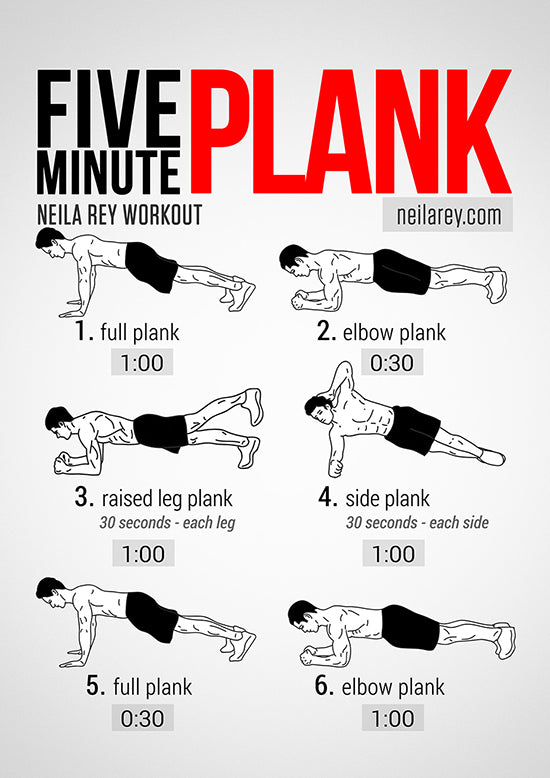
To make sure you get the most out of your planks, and stay safe while you're doing them, make sure you:
- Keep your core tight.
- Keep your shoulders above your elbows/hands.
- Keep a straight line from your shoulders to your heels. Don't let your butt sag, and don't go downward dog.
When should I do it?
As with any core exercises, it's best to do them either as a stand-alone circuit, or after any weightlifting or plyometrics. That way, your core will be strong during your other exercises like your squats, pushups, split jumps, etc. Then you can blast your core into jelly with this plank circuit, and finish your workout with some supermans and some light cardio or stretching.
The Top 7 Horse Commercials of All Time in the Universe Ever Maybe February 01 2015
As equestrians, we love nothing more than photos, videos, commercials, TV shows and movies about horses (though secretly we sometimes hate them because of the terrible “riding” the actors do). Seeing as today is Superbowl Sunday, and seeing as how I personally care more for the commercials than the game itself, I thought to myself, “huh, I wonder how many commercials there are with horses in them.” So in between commercial breaks (sounds ridiculous - I know) I scoured the internet for some horse-focused commercials. Here is a definitive ranking of the top 7 horse commercials in the universe ever maybe:
7. Diet Mountain Dew’s “Horse Show”
Because sometimes when you’re supposed to do it one way, it feels right to do it another way. Having a horse hitting a “sick grind on that rail” or doing a double fly over (of sorts) is like the rock out, let your hair down, Mountain Dewiest idea of a horse show ever, and I kinda like it.
6. Central Beheer’s “We Bought the Wrong Horse”
No words. Just perfection.
5. OPI’s “The Instinct of Color”
This commercial is not only dripping with fierceness and girl power, it has some awesome CGI horse tap dancing in it. Perhaps the only reason that it’s at number 5 and not higher is just that, the CGI. While we can all appreciate the highlighting of the grace and elegance of a horse and a little friendly competition between that equine glory and the different styles of dance shown, I WANNA SEE THE REAL THING.
4. Longine’s “Horse Racing”
This beautifully shot video, which methodically traces the life or “journey” of a race horse, was totally captivating. It was such a beautiful representation of the natural power of these animals that I couldn’t help but find my jaw a LITTLE bit dropped. HOWEVER, it didn’t really have a message, and as a piece of marketing, I found it lacking. Kind of wondering, was this just a cool video about horses? I mean cool if it is…. I just wanna know what I’m looking at here ya know? Cuts to a Longines watch face were symbolic of the methodical progression of their training? Or the metronome like gait of the thoroughbred? See!? I don’t even know, but gosh it was beautiful.
3. SourceS RosporT’s “Source of Life”
This video is everything the Longines video ISN’T. Excluding the fact that they both have beautiful cinematography in common. This video highlights horses while simultaneously embodying something as simple as water - though, the entire time, you are meant to feel as though you are listening to the voice of this powerful animal. I’m not sure if the ultimate point was that water and horses are pretty similar in characteristics? Or just a trick to get all of us horse lovers obsessing over this video…. but whatever it was, I’m totally on board.
2. Budweiser’s 2014 Superbowl Commercial, “Puppy Love”
While we may be horse people, the line between “horse person” and “dog person” is incredibly thin…. like often invisible thin…I mean like usually doesn’t even exist thin (I have 2 dogs and that’s still not enough). Puppy love was an ADORABLE representation of two different companion animals forming a companionship of their own and we, freaking, LOVED IT.
1. Budweiser’s 2015 Superbowl Commercial “Lost Dog”
We know we know, total copout to have two Budweiser commercials as the top two, but can you blame us!? “Lost Dog” had tears welling up in our eyes and causing us to carry our dogs to the barn to simultaneously hug our pups and our horses because love and warm fuzzies and stuff. UGH.
Have you seen a funny, inspiring, or down right crazy horse commercial we may have missed? Share it with us on Facebook or in the comments down below!
Workout Wednesday: Boost Your Muscular Endurance With Split Jumps January 27 2015
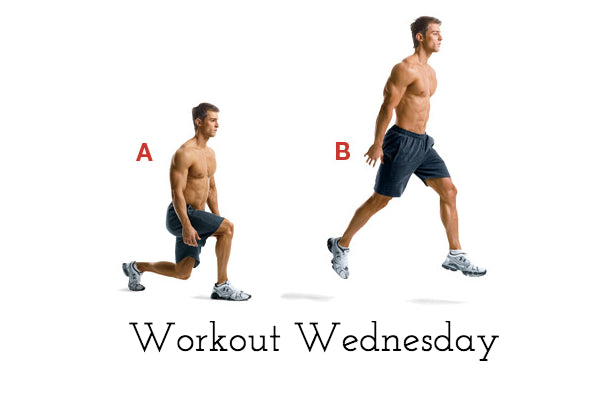
Why bother?
During a long riding lesson, your thighs and glutes are probably the first parts of your body that start to feel like jelly. And while you might assume that the best way to strengthen your trunk is to get to the gym and hit the squat rack, a powerlifting routine isn’t likely to help much with your riding. Instead, you should really focus on your muscular endurance, so you can get through a long class, or even a 30 minute lesson, without developing jelly legs.
Plyometrics like split jumps (which are a part of the Spartacus Workout) are a great way to build your muscular endurance. Split jumps work your glutes, your thighs, and a bunch of the stabilizing muscles in your core and lower body, and they’re just the kinds of exercise that will strengthen your trunk for riding, without adding a ton of bulk to your legs.

How do I do it?
- Stand like you’re about to dip down into a lunge - one foot forward and one foot back, with your knees slightly bent.
- Jump up, swinging your back leg forward and your front leg back, so they end up opposite to your starting position.
- Land with bent knees and dip down into a full lunge. Keep your upper body straight as you do so. Make sure your front knee doesn’t cross over your front toe as you lunge.
- Repeat for four sets of 12-15 reps, with 1-2 minutes of rest between sets.
When should I do it?
This really depends on your routine, but bear in mind that plyometric exercises like split jumps will turn you into a quivering heap of jelly. Given that, it’s best to do these towards the end of your workout, or as a stand-alone exercise.
From Academy to A Circuit: What Changes? January 26 2015 1 Comment
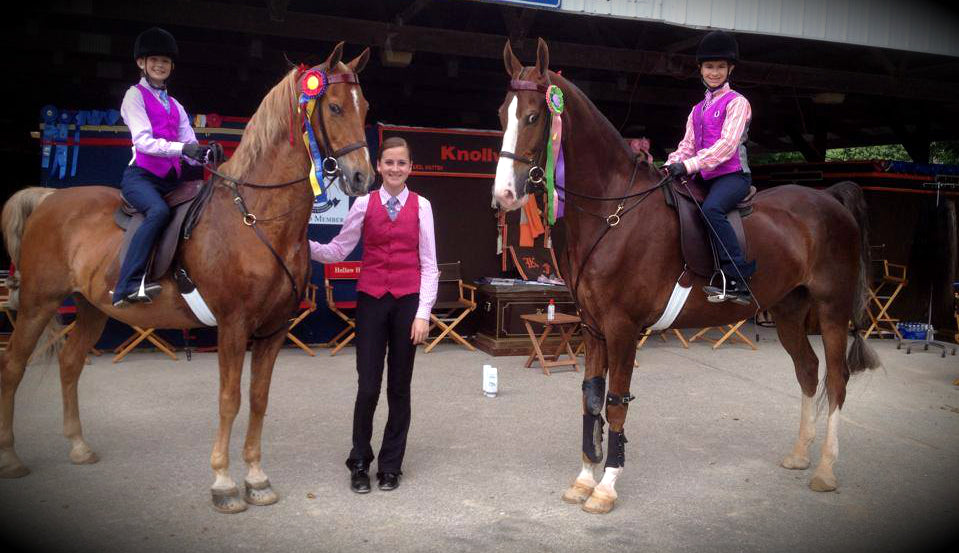
While many in the Saddlebred industry started their show career at Midwest in a Walk and Trot or Walk only leadline class, many more of us started our Saddlebred career with academy showing and worked our way up to A Circuit showing. But before getting into the biggest differences between academy and A Circuit, it’s important to acknowledge that both are incredibly important to our industry and our learning, and that both should be equally regarded as funnels for building and growing the Saddlebred and industry. Showing in the A Circuit does not mean that the riders are better, just like showing in Academy doesn’t mean you aren’t capable of showing A Circuit.
However, there’s often a hullabaloo associated with making a transition from academy to A Circuit, and here are the three things that we found to be notably different when we decided to go from academy to A Circuit.
The Horse
We all love our school horses, but compared to an A Circuit show horse, academy horses are a totally different animal (pun fully intended). Academy horses go forever, show in a ton of different classes at any given show and are often bomb proof, giving any rider a safe and fun learning experience. A Circuit show horses are powerful, have tons of motion, and are usually only shown in one division (meaning you get a qualifier and a championship and that’s it). These animals have motors on them and live to be in the show ring, in front of people, hearing the cheer of the crowd and gelling with their rider, becoming a fluid and unstoppable team. On the other hand, academy horses live to be loved, to teach their riders, and to challenge them in silly ways (like pulling them out of the turns or having a bit - or a lot - more “go forward” than they do at home).
The Outfit
Academy regulations are different by region, but in the midwest, jods, a button down shirt, vest, tie, hair in a bun, nice clean boots and gloves comprise the academy show outfit (with appropriate accessories of course). A Circuit outfits require a whole lot more, and vary depending on what division you and your horse plan to be showing in.
Equitation
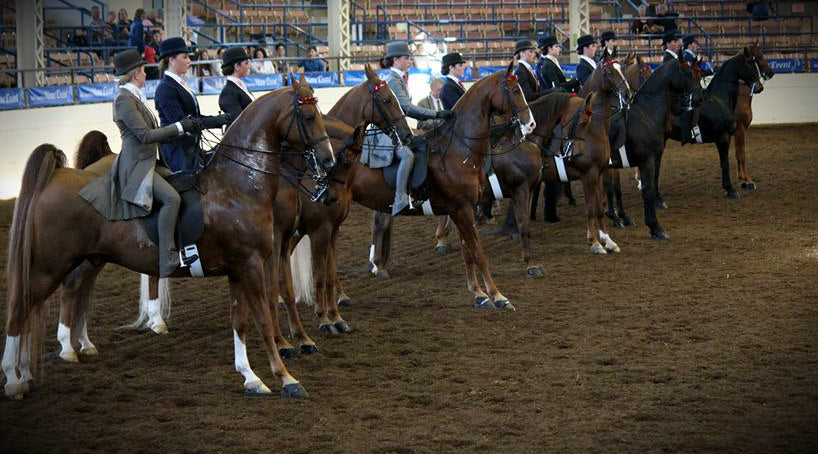
If you are in equitation you will want a solid colored suit (meaning jacket and jodhpurs are the same color and pattern - no day coat), button down shirt, vest, tie, gloves, hair in a bun, matching derby, and matching boots. You will also need a formal or “tux” for evening classes, black or navy tux with the proper tux shirt and vest, studs for the buttons, bowtie, top hat, white or black gloves, matching boots and appropriately accompanied accessories for both day and night classes.
Performance
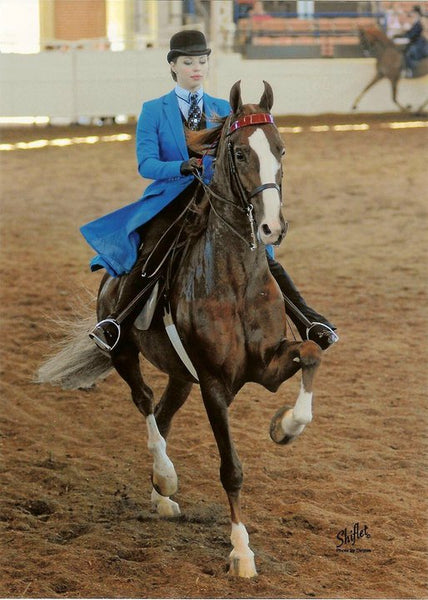
If you are in a performance division you can wear the same, solid colored suit ensemble, or you can get more creative with a day coat and suiting ensemble. This usually comes in the format of a solid pair of jods with a patterned coat in the same color family (plaid or some other variety of textured fabric).
Three-Gaited or Park
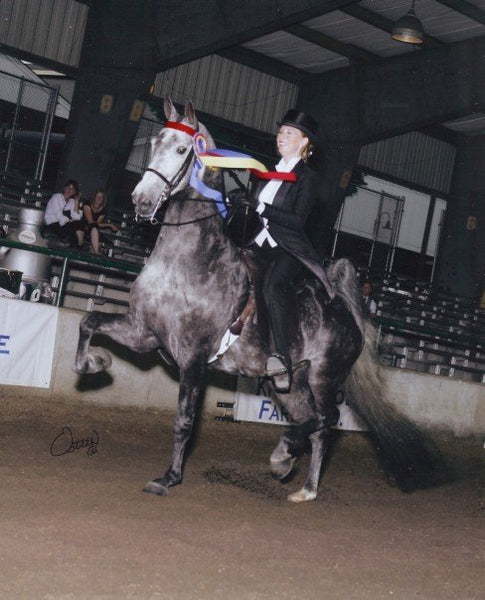
If you are showing in the three-gaited or park subdivisions of Performance you will also need a tux of the same variety, however, you can also go for a “day coat” style of tux, where the coat, just like the day coat for a regular suit, does not match the jods. We could go on and on about the little bits and pieces of show suiting, but the fundamentals are this: academy - one outfit, A Circuit - many outfits with many pieces.
The Bridle
Once again regulations on this topic are regionally different and also in the midst of being changed by certain governing bodies, but typically speaking, you don’t see an academy horse showing in a double bridle, whereas you only see A Circuit horses in a double bridle. Many academy horses are seen in the show ring in their at-home bridles (clean and dressed up with ribbons of course), but it’s usually a snaffle bridle, perhaps with a german martingale or some variety thereof. The A Circuit horses are in double bridles with two bits in their mouth with ENDLESS varieties on those bits, but often, one is a smooth or twisted snaffle and one is a curb with long shanks to which the curb rein is connected at the bottom. This gives the rider far more leverage than a typical snaffle bridle with two reins and also requires a much more subtle hand. We all know Saddlebreds are a breed that are typically naturally light in the bridle and require little corrections here and there. With such a powerful bridle as part of the showing requirement, to ride A Circuit, you must be able to ride with a light hand, make the necessary and proper adjustments, and keep your hands independent from your body movements (aka no posting from the bridle - NO horse will thank you for that kind of behavior). While these are all goals in academy, it’s far more challenging to find the forgiving nature we so often see in school horses packaged in the exciting mentality of a show horse competing on the A Circuit level, and the bridles the school horses wear allow for that type of learning in the show ring.
Wrapping Up
There are SO SO many more differences between academy and A Circuit that we could go into, and these are just a start. Do you dave any differences you noticed when making the switch from one showing experience to the other? Let us know in the comments below!
Workout Wednesday: Improve Your Riding Posture With Supermans January 21 2015
Why bother?
We all know that trying to ride with a weak core will leave you flopping around like a wet noodle. But for many of us, strengthening our core usually means crunches, planks, and some leg lifts. But even if you have a teenage mutant ninja turtle style muscle gut, your core is only going to be as strong as its weakest part, which for many of us, is our lower back.
And if you want to strengthen your lower back, adding Supermans to the end of your core routine can be a great way to start.

|
How do I do it?
- Lie with your stomach on the ground, with your arms extended and your legs straightened.
- Keep your core tight and use a smooth motion to raise your legs, arm and chest off the ground.
- Hold this for five seconds before returning to your starting position.
- Repeat for four sets of 12-15 reps.
When should I do it?
Try adding Supermans to the end of your regular core circuit - they’ll help you stretch out your core to finish your workout.
Superman image from Wikipedia.
The Five Reasons we Love School Horses January 18 2015
 |
You may have seen the hashtag #ThankGodForSchoolHorses floating around the twittersphere/facebooksphere/spheresphere these days. It got us thinking: of course we love school horses, but what are the exact reasons? Obviously, school horses are the most precious of animals, so the answers to this important question could go on and on and on, but we dared to narrow it down to just a top five.
1. Their vast intelligence
Have you ever seen a school horse pick up a trot, reverse, or do virtually anything that the teeny tiny child on its back should be telling it to do, if only they had the experience, the will, or the strength to ask the horse properly? We sure have! School horses know their job down to the smallest of tasks and will follow their school horse brothers and sisters, rider or no rider, to make sure they get the job done.
2. Their patience
A big part of school horses knowing their job is having the patience to let a tiny tot desperately try to hold their foot up to pick out their feet. While that young equestrian fumbles around trying to hold what must feels like a ton of bricks, school horses just stand there, munching on some hay, letting it all happen. It allows these young equestrians to safely learn about horse care and gain the confidence and strength to do so as they grow up.
3. Their loving nature
No creature is more caring than a school horse. While your show horse may love you and the candies you bring, they are show horses for a reason - and many of them (though NOT ALL) are total divas or divos. School horses are often horses that have been rejected, repurposed, or rescued, and they need you, need their job, and love their kids. I’ve seen a school horse do a SLIDING stop when a kid fell off to make sure they didn’t step on or hit them, and then walk over to check on that frightened child, who was covered in dirt and crying. They feel bad when a kid falls off they want to make sure they are okay, just as any instructor does.
4. Their personality
Absolutely EVERY horse has a personality. This trait isn’t exclusive to school horses, but a school horse’s personality is what makes them:
- so much fun to have around, and;
- such valuable teachers.
Some horses tolerate a stronger hand on the bridle or a stronger leg and others do not. Learning to deal with these variances in personality help a rider become a well rounded equestrian. More horses to learn from means more things to learn, because no two horses are the same. And let’s face it, we all give extra candies to the school horses that nicker at you when he or she hears the crinkle of a peppermint wrapper and we have an extra laugh when the sassy horse of the bunch drags a tiny tot into the middle of the arena to say “I’m done and this kid is too small to do anything about it.”
5. Their legacy
Entire generations of riders at barns with school horses did things like have their first ride or learn to canter all on one horse. They are the “professors” of a school program. They are the safest, the quietest of school horses; the horses that you can pop a quarter into and they will just trot or canter calmly until you ask them to walk. They are the horses that bring that goofy smile to a child’s face when they feel that first bouncy trot or the smooth rocking of a canter. Then there are school horses that somehow become benchmarks for riding ability and when you ride them for the first time, you find people saying “wow” or “congratulations!” They are the school horses that teach you valuable lessons about more difficult and nuanced aspects of equestrianism and they are the horses that challenge you, make you doubt your ability, and make you push through that doubt to reach a whole new level.
There has never been a truer hashtag than #ThankGodForSchoolHorses. Do you have a story about a school horse at your barn? Share it with us in the comments down below or on Facebook!How to Build a Successful School Program: An Interview With Jessie Richardson January 13 2015
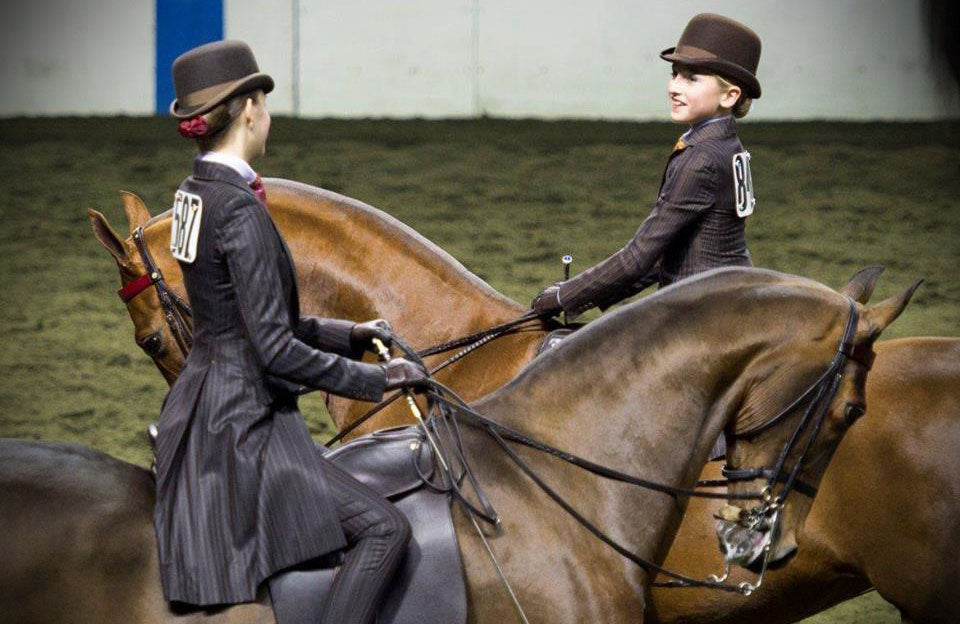
A successful school program can be a barn’s foundation for success. This is certainly the case at Kierson Farm in New Jersey, where the farm's founders have built such a successful school barn that 90% of their customers have come up through their lesson program. We spoke to Jessie Richardson, who founded Kierson Farm with her husband Michael five years ago, about how they’ve built such a strong foundation.
The Jodhpurs Company: You have an extensive school program at Kierson. How do you know when a rider is ready for the next challenge of moving into the A Circuit?
Jessie Richardson: We always say that we can take any rider from the first day they walk in the barn to, a year later, having them on a show horse and ready to get in the ring. I usually like our kids to show academy for experience for one or two seasons and keep moving.
TJC: When you’re looking for a horse for a customer, what do you feel are the most important factors in finding the right fit?
JR: With the kids and adults that come out of our programs, it’s not so much about trying to fit the right horse for the customer, but the right horse to our program. Our kids are versatile; and we’ve found a very specific type of horse and stride that we feel works best for the greatest number of our riders. Our ideal horse should be versatile, and able to fit with a lot of different people.
TJC: How do you determine what is enough of a challenge and what is too much in the level of the horse and the rider?
JR: I don’t like to challenge our riders too much at the start; we want a horse that will build a rider’s confidence and give the family a great experience. The kids are oddly more resilient – they understand they are learning and progressing and they get when mistakes are their responsibility. We try to find something that will give the family confidence and a good experience; if the rider outgrows their horse in a year then so be it!
TJC: A lot of people say “you know, when it’s right”…. What are some things that clue you into that “you know when it’s right” moment?
JR: I don’t really agree with that. I feel that no horse is right the first time you ride it. I prefer to evaluate the horse, what job I want it to do, and then decide if I can train the horse to do that job. Sometimes it doesn’t work; sometimes you have to see through the horse and figure out if it can do that job in the training.
There’s always a time when you see a horse in a show ring and it strikes you and you think “man I want that horse, it would be perfect”, but it’s not for sale or I don’t have a buyer. Recently I had a buyer that wanted more horse and one came to mind immediately. People had always said that this particular horse couldn’t be ridden by a 10-year-old rider. But when I got on the horse I really felt that it had the willingness to become what we needed. We purchased it and it’s had great success so far!
The biggest thing is the importance of the foundation we set with our clients. It’s rare that a new client will find their dream horse right away, and so for many of our customers, it takes time to develop the understanding that we’re going to find them a horse. A lot of people will want to move elsewhere to get something better. So it’s our job to gain the trust and confidence of the family so we can give them the dream horse that they want. While you can’t always predict how a horse will respond to training or develop, we still feel very responsible for delivering the dream we sell to our clients.
The Five Steps to Getting Past a Training Plateau January 06 2015

We’ve all been there in our training. We’ve all felt the sting of wondering, “Will we ever get any better? Or is this as good as it gets?” Hitting a plateau can be one of the most discouraging feelings there is, especially when it’s a very broad plateau that seems impossible to get past. Luckily, by going back to basics and reapproaching your training from a new perspective, you can get beyond almost any slump.
1. Analyze the core of your problem
The first step is, as they say, the hardest, but if you can’t find a clear skill or task that is stumping you, it will be really hard to fix. Now this doesn’t mean you should spend endless hours hung up on a feeling of failure; say by beating yourself up for messing up a pattern. It just means you need to acknowledge and identify the specific element that’s bothering you - for example, the center points or your diagonals. Sit down with your trainer if they have time and take a mental look through your lessons. Or ask a friend to film one of your lessons so you can analyze your plateau from a (literally) new angle. Plateaus cause you to fall into a repetitive cycle of unproductive lessons. Break the cycle by really figuring out what it is that’s stopping progress!
2. Reposition your training
Sometimes hitting a plateau means you just don’t understand or feel what is going wrong underneath you and you need an expert perspective to get that “AHA! *Light Bulb*” moment. We spoke with Ann Wilt, an instructor at Knollwood Farms for 15 years with over 40 years of Saddle Seat riding experience. She says that “to break through a plateau, you [have to] approach the skill in question from another angle. Having trouble with diagonals? Try riding bareback.”
In the case of diagonals, bareback riding is the perfect repositioning because, not only can you see the diagonals better, but you can also feel them better; while also building up your balance and strength (an equestrian’s bread and butter). Things like lunge lessons can help combat equitation plateaus and ground work (get yourself to the GYM) can help combat any sort of endurance issues when working with a horse that requires more umph.
3. Beat the blockage with something new
Ann suggests that combating skill “blockage” can be as simple as learning something new. Work on some simple patterns or new skills that can distract you from the skills that are causing you to plateau. Sometimes plateaus are entirely mental and caused by the pressure that we, as equestrians, put on ourselves. Working on a simple new task can cause us to automatically (and unbeknownst to ourselves) overcome the plateau through a renewed instinct and uninhibited feel!
4. Get back to basics
When you find yourself having bad lesson after bad lesson and feel your confidence just FLUSHING out of your system, getting back to basics can be the best source of rebuilding. “Return to some comfortable basics on a horse the rider has had some success on. Build [your confidence] back up and resume the challenge on a horse that will test [you] while allowing [you] to continue building confidence,” Ann says.
Just like with any other sport, sometimes we just don’t know if we’re capable of the task at hand. This can cause a number of ‘demons’ to creep into your training brain and give you thoughts of self doubt and doom. To fight these feelings, take a step back and work on your fundamentals, apply steps 2 and 3, and then take that leap forward and power through your slump.
5. Don’t be afraid to make a mistake
As Ann says, “riding attracts a lot of high achieving kids who expect a lot from themselves. Many times this translates into a rider who always wants to do the right thing.” While doing the “right thing” makes us feel better as riders - and let’s face it, getting a “good job” out of our trainers is like the highlight of our week - this perfectionism is often the source of a plateau which will end up causing you, as a rider, to sell yourself short. While mistakes are often emotionally painful to riders that “expect a lot from themselves” they are SO often the absolute best source of making huge strides in your training.
While plateaus are scary, painful, and downright irritating, we all hit them at some point in our equestrian lives; and many of us hit them more than once! The important thing is to keep striving to get past them and refuse to let the voices in your head tell you that “you’ll never get better” and “you are a terrible rider.” It should instead be saying, “you can do this.”
Have you ever hit a nasty plateau? Tell us your story in the comments and what helped you get past it. Get your training on everyone!
Not Your Average Jods: an Interview with ALYMPIC EQUESTRIAN December 23 2014

Usually, when you buy a pair of jods, you know what you’re getting - a pair of cotton (or maybe synthetic) pants with knee patches. A good pair might fit like a familiar pair of jeans, and a bad one might feel like you borrowed your dad’s golfing slacks. But typically, you know what you’re getting.
That is, unless you’re talking about ALYMPIC jods.
We’ve been sitting down with our vendors to find out more about what makes their brands and their products unique. We started with Jodi Nelson, founder of Artic Horse, and recently we were lucky enough to have the chance to speak with Autumn Harrier, founder of ALYMPIC EQUESTRIAN.
The Jodhpurs Company: Why did you found ALYMPIC EQUESTRIAN?
Autumn Harrier: As a lifelong equestrian, I live in my jods. From my early years as junior exhibitor, through the amateur ranks, and then as professional, I never found myself completely satisfied with the jods that were currently on the market. Over the years I discovered my friends, colleagues, and clients shared the same concerns as I did regarding our current choice in jods. Something was lacking, and so two years ago I decided to do something about it. I wanted to create an everyday jod that was comfortable, functional, durable, and above all indicative of what equestrians are; athletes.
TJC: What makes your jods unique?
AH: ALYMPIC is the first equestrian clothing brand to take daily wear saddleseat jodhpurs from a casual jean-like style to technical clothing line with an emphasis on athletic performance. We did away with all the zippers, buttons, and snap waist closures and use only athletic activewear performance fabrics to create our jods. ALYMPIC jods are moisture wicking with compression textile technology for anti-fatiguing muscle support and feature a custom designed comfort soft elastic waistband, a feature that is unique to our brand. All of our styles have been field tested and perfected to give the equestrian a flattering fit both in and out of the saddle while still remaining durable to meet our equestrian lifestyle demands.
TJC: What is your business philosophy?
AH: ALYMPIC is an equestrian clothing brand created for the equestrian by an equestrian. We want our customers to feel great in and out of the saddle so that they can train and work as hard as their equine partners. Regardless of your age, body type, or equestrian experience, ALYMPIC jods are a good fit every equestrian. We strive to bring the highest quality, most innovative fabrics, and modern styles to each ALYMPIC collection.
TJC: What was the most difficult roadblock you encountered when getting ALYMPIC started?
AH: I searched tirelessly for over a year to find the right fabric and textile source for ALYMPIC. Making it even more challenging was that I was determined to keep all of ALYMPIC sources United States based companies. After an exhaustive search and prototyping process, I feel very satisfied with the companies and the materials that I have chosen to construct the ALYMPIC brand.
If you're going to spend any time in the barn this winter, be sure to check out ALYMPIC's fleece-lined Warm Winter Lexington Jodhpurs and Signature Jodhpurs, available for adults and kids.
Unique Show Accessories: Why They Matter to Artic Horse December 05 2014 1 Comment

The TJC Team, much like the Elves on your shelves, have been hard at work (and still are) while you have been away at work, school, or even sleeping. Though we try to not be caught in any compromising locations (classic hand in the cookie jar elf on a shelf), we think it’s time that our audience got to say a fond and resounding, “hello” to the vendors that have been brave enough to sign on with us from the start!
First up: Artic Horse - a line of show accessories by Jodi Nelson! We asked Jodi a few questions we thought would be important for you to know about her hair bows, number magnets, lapel magnets, and philosophy.
The Jodhpurs Company Team: Why did you found Artic Horse?
Jodi Nelson: It all started with a hair bow I had purchased at a horse show about 7 years ago. It was cute, however, pricey. I looked it over and thought, "I'm going to try to make one of these and sell them at a fair price." From there came number magnets next lapel magnets, bling ties and whips!
TJC: Why do you focus on making such unique accessories?
JN: Unique accessories make what I do more intriguing, while most crystal magnets are the standard out there, I love to find pieces that make a one of a kind set that someone will adore!
TJC: What's your business philosophy?
JN: My philosophy is, to create HIGH quality, personalized accessories at a very fair price!! I take pride in my work!
TJC: What was the most difficult roadblock you encountered when getting Artic Horse started?
JN: Roadblocks initially would be, getting the word out to people. Word of mouth is everything in this business! And, of course, time!
We hope to help Jodi tackle that roadblock with ease and allow Artic Horse to be the household name it deserves to be! See some of Jodi’s unique items here, and if you don’t see something that you need, be sure to get in touch with us via: custom@thejodhpurscompany.com to talk about fully customized options!
How to Spot A World Grand Champion - an Interview with Melissa Moore November 24 2014 1 Comment
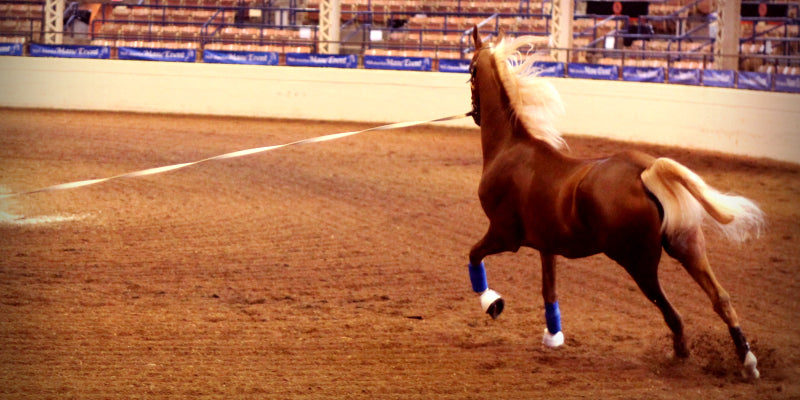
In our industry, turning a weanling into a World Grand Champion is the pot of gold at the end of the rainbow. Imagine the feeling of achievement at having spotted a horse so early on and training it into a champion.
Here’s the thing: searching for and dealing with prospects can be a huge gamble. A horse may look great as a weanling, but grow into an adult that has no taste for showing. As an amateur myself, I’ve always been interested in what it is these trainers are looking for when they breed, buy, and sell prospects of their own. How do they know when they’ve struck Prospect Gold?
I spoke with Melissa Moore of Sunrise Stables in Versailles, Kentucky; a renowned Saddlebred trainer and Saddleseat instructor with more accolades than we could fit into any blog post, to ask her about how she spots a prospect.
The Jodhpurs Company: What kind of physical traits do you look for in a prospect?
Melissa Moore: I look for good confirmation. I like to see their front legs set not too far underneath their shoulders so they can have a free and rolling gait. It will make it more difficult for them to be a show horse in our industry if they can’t get that free shoulder movement. I like nice back legs that are also not too far underneath them as well as a natural headset. Every prospect will change once they have tack on them, but if they can hold their heads up standing still, that’s half the battle!
TJC: What behavioral traits can you look for in a young prospect that might indicate a good show horse?
MM: Beauty is a plus, but some not so pretty horses make great show horses. Until you spend some time with them under tack, you really don’t know what you have, but a lot can be overcome with a horse show attitude.
TJC: What makes up a “show horse attitude”?
MM: I like a prospect that’s game on their own and wants to go forward and knowing your blood lines helps too. For example, I’ve worked with some blood lines that get more game the more they’re worked so it’s good to have some idea of what to expect there. I like something that is sensible, but isn’t cautious. A show horse attitude is exactly what it sounds like, a horse that likes to show off!
TJC: What are some red flags to look out for?
MM: Poor confirmation. Poor confirmation doesn’t mean that horse isn’t great for something else; all horses have a place and a purpose, but you obviously won’t be able to sell it as a show horse. Horses that stand really far back in the knee is a definite red flag; it’s a lot harder for them to use their legs and if they don’t have that show horse attitude. I don’t like to “wear out my clucker” so to speak!
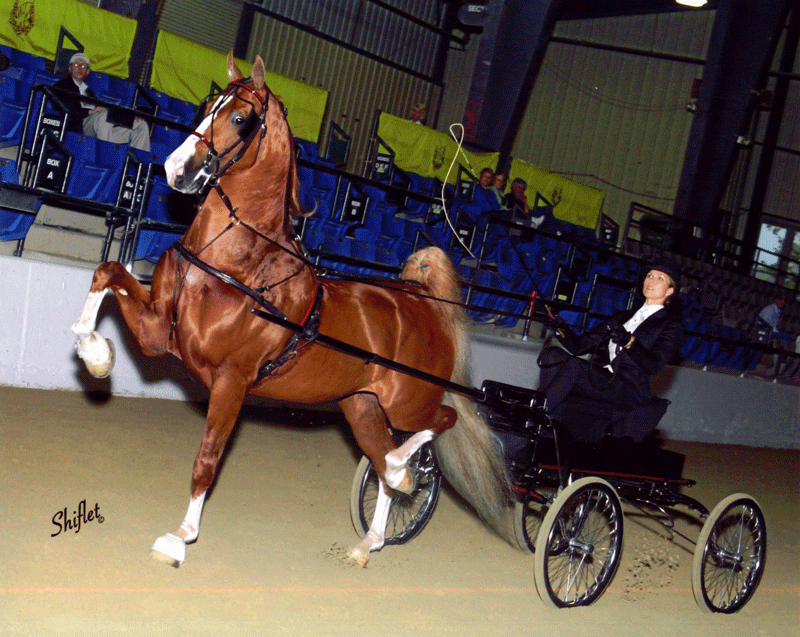
TJC: Any memorable prospects you’ve worked with that really turned out to be great horses?
MM: Gothic Revival, who has a special place in my heart. Besides his beauty, if you made a noise in the field when he was young, he would flip his tail, snort and show off. That’s show horse attitude!
TJC: Any memorable lessons learned from prospects that you missed the mark on?
MM: I’ve learned from every horse I’ve worked with, but I can say I get very attached to my prospects and sometimes give them too much of an opportunity to try to be a show horse. Unless they are dangerous, if they want to try, I will try and keep developing them. Sometimes I will turn them out after their yearling year to give them more time to develop and it still doesn’t work out so I think one hard lesson to learn is when to cut your losses and realize they may not be the show horse you hoped for.
TJC: Any parting advice for those of us looking to find the right prospect?
MM: It’s really important not to rush them and to give the horse the opportunity to find their niche, whether it’s to be a western horse, a country pleasure horse, or a five gaited grand champion. They might not be the fancy Walk Trot horse you were looking for, but they may be the best hunter jumper horse in the country so you can’t try to put them into a mold that they can’t fit into, but rather, let them be best at what they can be.
Got any advice of your own to offer on spotting a prospect? Any stories to share on developing a horse? Leave a comment below or join the conversation on our Facebook page!
I Didn't Care for Equitation. Now I Do. Here's What Changed. November 14 2014
My wife, Lindsay, has been riding since she was nine. I've always made an effort to be involved, and to take an interest in all things equestrian, but I really didn't get it. What were the judges actually looking at? How can they tell who's doing well and who's doing poorly? And what's with the dinky organ music?
Well, this year I had a pretty unique opportunity, in helping Lindsay organize the NHS "Good Hands" Finals at the Mid-America Mane Event horse show. And now I think I'm starting to get it. This time, here's what I saw:
Spending a few days filming this event, and then spending a few more watching the footage as I edited it, I was really struck by three things I'd never noticed before.
1. The Precision of Equitation
Watching the eventual champion, Aleia, walk her pattern with Erin before anyone had entered the arena, I was surprised to see how much attention they paid to every detail. Every turn was thoroughly thought through, and every pause was careful and deliberate. Seeing the competitors perform their patterns, I couldn't help but appreciate how precise that attention to detail made every movement, for both horse and rider.
2. The Intensity of the Competition
As Allison Lambert says in the video, "the girls work so hard." What's more, they care so much about how they do. Walking individual patterns in front of a panel of judges and a crowd of onlookers takes incredible competitive spirit. One interesting thing that Jessie Wuesthoffen said, which we couldn't quite fit into the video, was that she found herself naturally distancing herself from the other riders last year, even though they were (and are) her friends. But this complicated intensity has an equally empathetic upside (that hug!) and feeling of mutual respect.
3. The Horsies
Horses are cool. Everyone gets that. But this was an absolutely amazing group of horses. I mean that first shot - look at that face! But it's also amazing when you begin to see how attuned they are to the feelings of their riders. They get just as nervous, and just as excited. And they show it, especially when compared to the restraint of an equitation rider.
So I think it's fair to say that I'm starting to get it. Except, maybe, the organ music.
The Three Keys to Winning Your Class Without the Most Expensive Horse October 31 2014 3 Comments

Ever had the ride of your life in a class full of World Grand Champion horses that have never or rarely lost a class? You get to the lineup, pat your horse for a job well done and say to your trainer as you exit the ring ribbon-less, “That was our best go yet!”
Well first of all, good for you for having a good attitude.
Sometimes being in a class of the best of equine talent the world has to offer means that no matter how well you do as a rider, you just won’t “make the cut.” It’s a reality everyone faces in every division of Saddleseat and every discipline of equestrianism.
Just like in any sport where you rely entirely on something else to be a part of your participation - be it a horse, a car, a bike, or even the proper shoes - money will factor in to your ability to excel when it comes down to it. Turning your essential piece of “equipment” into a commodity that can be bought means: having the best (i.e. having a horse with the best confirmation or physical ability) is going to cost you. While that’s a reality in all aspects of sport and even life, there are a few things you can do to combat that reality as a horseman/woman!
1. Showmanship
Get your horse out there. You will do yourself and your underdog horse little good if you are glued to the rail. With a ring full of equine talent like none other, why would the judge take a single look at your modest, yet beautiful horse? You have to make the judge look at you and make the judge realize, you and your horse are a team that has more than you can see at first glance. How can you accomplish that? Ride in groups whenever possible. Some school programs and barns don’t have the capacity to accommodate group classes, but if yours does, participate. Being in large groups for lessons will heighten your awareness of those around you, allowing you to cut the turn and get away from the pack like a pro!
2. Dot your I’s and cross your T’s!
High caliber classes are hugely exciting; not just for the rider, but for the horse as well. Think about it from their perspective. These are pack and prey animals. You are tossing them into an unfamiliar place with a bunch of horses they don’t know while the audience screams their hearts out for the beauty, elegance, and glory that is showing saddlebreds! You’re excited because you’ve worked all season for this and your horse is excited because they are like, “OMG WHAT IS THIS PLACE AND WHO ARE THESE HORSES!!!” Use it. Use it, but don’t abuse it! Sometimes a lack of good behavior is what can bring you and your underdog partner right up to the winner’s circle, so dot those I’s and cross those T’s, because the second those fancy expensive horses screw up, you will (hopefully) be showing the crap out of your horse AND behaving!
3. Practice
The most obvious (but most important) key to winning your class. If you aren’t hitting the ring at home with your horse, doing ground exercises to ensure optimum physical fitness, and doing as much practice with any other horse as possible, how in the world can you expect to have a feel for your horse and what they need to accomplish the two previous goals? Above all else, this is a sport. If you play basketball and you don’t practice more than a couple times a month when you get the chance, then show up to a huge game expecting to be started, you better believe if I was your coach you would be benched, because you would probably suck. Similarly, you can’t expect to be a capable and adaptable rider if you don’t ride and you definitely can’t expect to handle whatever is thrown your way if you are out of shape.
These are obviously only three suggestions on how to take your horse that you bought as a baby for next to nothing, then take it in the ring with horses you know sold for a quarter mil and kick butt. There’s far more to riding than showmanship, behavior, and practice, but it sure is a good place to start.
- Previous
- Page 3 of 3

